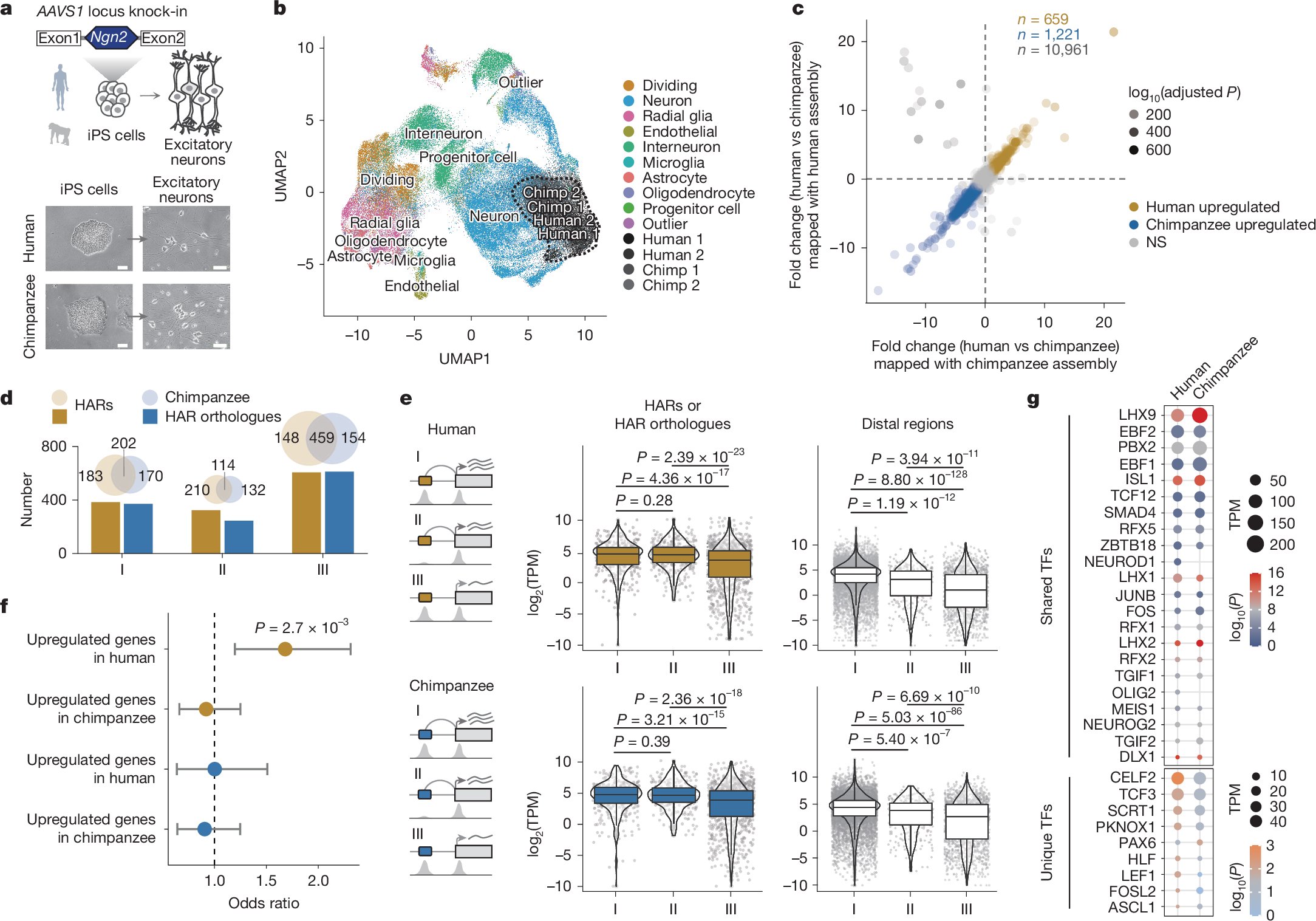
Xiekui Cui
@MarkTransposon
Assistant Professor @EmoryUniversity @EmoryGenetics, interested in Human Accelerated Regions, transposable elements, brain evolution, prostate cancer
How did humans develop unique traits despite sharing nearly identical genomes with other primates like chimpanzees? Together with Han Yang (@HanYang_Henry), our new study on human accelerated regions (HARs) sheds light on this question @ nature.com/articles/s4158…. 1/12

Neuron programming! Pro-neural TFs + 480 morphogen conditions + scRNA-seq --> Diverse iN subtypes of forebrain, midbrain, hindbrain, spinal cord, and PNS. science.org/doi/10.1126/sc… @HsiuChuan_Lin @JasperJanssens7 @TreutleinLab @ScienceMagazine @ETH_BSSE #NGN2 #ASCL1
Our preprint describing the Range Extender element, which is required and sufficient for long-range enhancer activation at the Shh locus, is out in @Nature. nature.com/articles/s4158…
How do enhancers work over distances that sometimes exceed megabases? Excited to share our work led by @gracecbower where we uncover a unique sequence signature globally associated with long-range enhancer-promoter interactions in developing limb buds: biorxiv.org/content/10.110… 1/
One-shot prime genome editing ("CRISPR 3.0") of the brain in vivo corrected AHC, a rare genetic disorder, in the mouse model. Another big step forward in the genome editing field. @CellCellPress @davidrliu and colleagues cell.com/cell/fulltext/…
New Article! Long-read RNA sequencing of transposable elements from single cells using CELLO-seq bit.ly/46fJGUO
Our new paper on genetic diversity in the Himalayas, when it began and how it may have supported survival in extreme environments sciencedirect.com/science/articl…
Trauma reshapes the brain at the cellular level. 🧵1/10
"Here we present the first direct evidence that H3K4me3 is not a cause but a consequence of transcriptional activation, functioning as a downstream epigenetic response" biorxiv.org/content/10.110…
Excited to start as Assistant Professor at Emory University School of Medicine and looking forward to more RNA biology research in prostate cancer and beyond. Open positions for postdocs/specialists, let me know if you or someone you know are interested!
Now online! Recessive epistasis of a synonymous mutation confers cucumber domestication through epitranscriptomic regulation dlvr.it/TLhgm6
Evolution of splicing model architectures go.nature.com/3I7QBoS Figure from our recent Review: From computational models of the splicing code to regulatory mechanisms and therapeutic implications (free to read here: rdcu.be/dVNV4)
Birds’ tolerance for sour, acidic fruits stems from a finely tuned version of a highly conserved taste receptor, according to a new study in Science. scim.ag/44gyTH0
moPepGen: A new computational tool to unlock protein variants in the genome #NBTintheNews forwardpathway.us/mopepgen-a-new…
Now online! Functional assessment of all ATM SNVs using prime editing and deep learning dlvr.it/TLg1b0
Cancer cells turbocharge themselves by stealing the energy-producing units from neurons in tumours go.nature.com/4nic9PD
A study in @Nature reports on the development of a method to trace intercellular transfer of mitochondria and demonstrates that cancer cells that receive mitochondria from neurons have enhanced metastatic capabilities. go.nature.com/4keoh1k
Cancer cells turbocharge themselves by stealing the energy-producing units from neurons in tumours go.nature.com/4ekMKRq
Evolutionarily recent transcription factors partake in human cell cycle regulation dlvr.it/TLWDzw
It’s the first time a near-complete skull has been definitively linked to the extinct people go.nature.com/45s40Sn
Nature research paper: Single-cell transcriptomic and chromatin dynamics of the human brain in PTSD go.nature.com/4lbYnfz